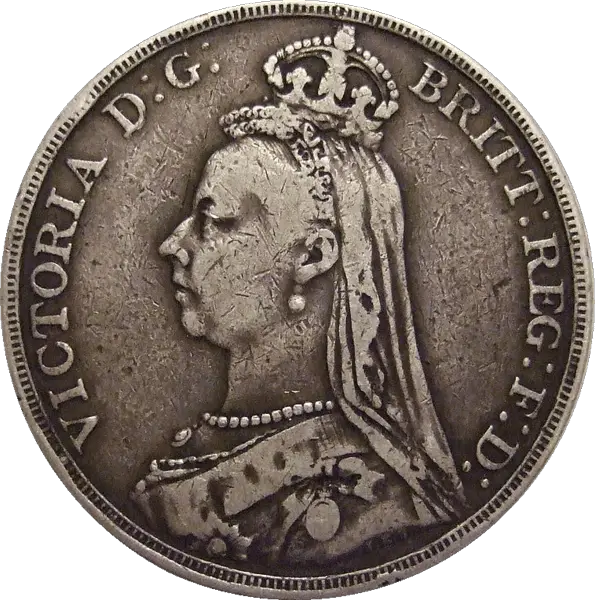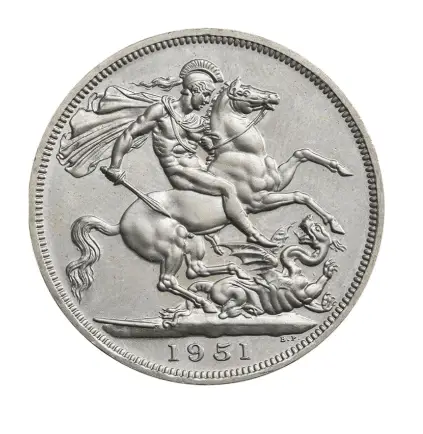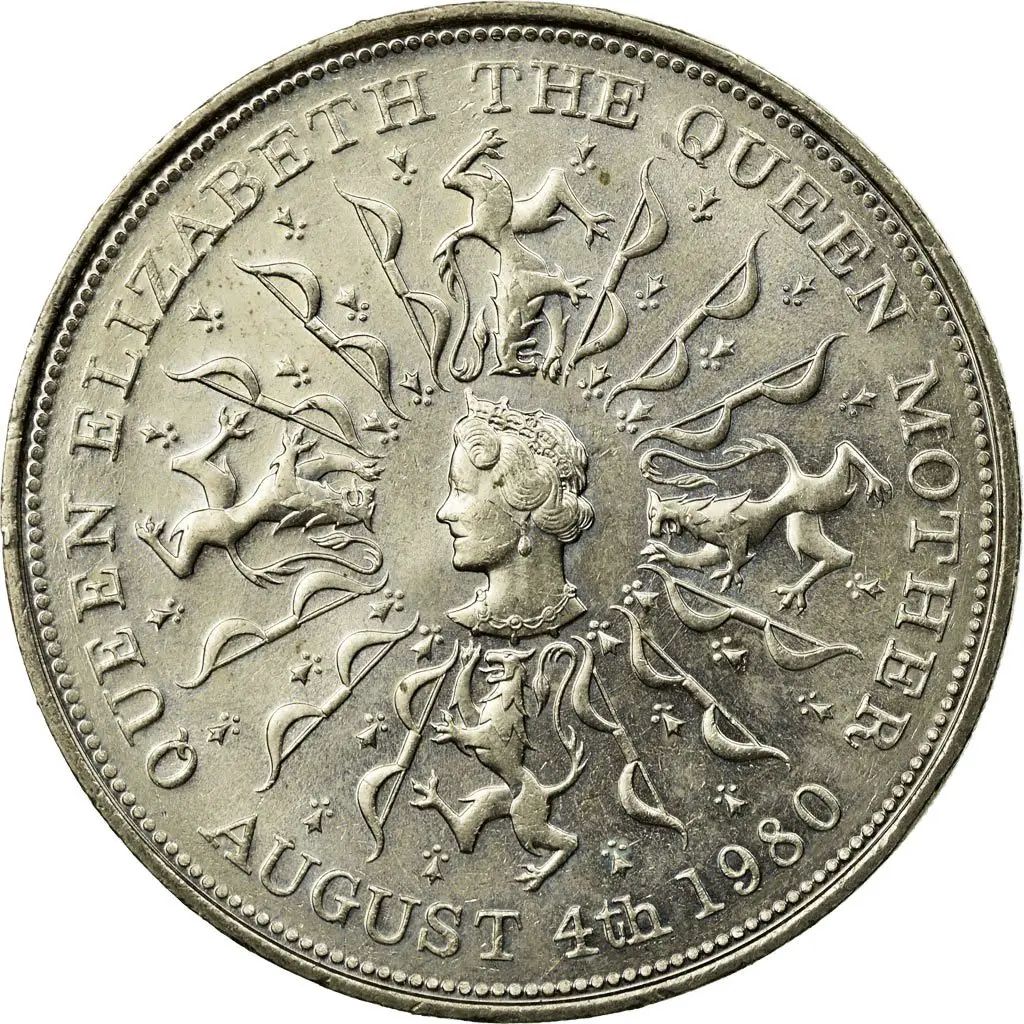A crown is a coin that was in circulation between 1707 and 1965 in the UK that had a face value of five shillings, which translates to 25 pence in today’s money. From the end of the 19th century, the crown became more of a commemorative coin, and this is still the case today.
It’s difficult to give a value of a crown today to collectors, as it varies greatly depending on the year of issue and the grade of the coin itself. Some crowns are worth less than £1, while others have sold for hundreds of thousands of pounds.
This may sound confusing at first, but in this article, we’ll dive into the history of the crown so you can understand why the value varies so much between different issues.
What Is A Crown Coin?
For someone who has grown up in the UK with decimal coinage, the pre-decimal pence, shillings, and pound must seem rather strange!
It seems very sensible that a pound, for example, would consist of 100 pence. After all, this is a simple, round number, which is easy to work with.
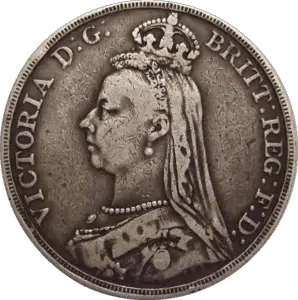
However, in the pre-decimal world, things weren’t this simple.
There were 240 pence in a pound back then! Just to make matters even more complex, you had shillings, which had a value of 12 pence each, meaning there were 20 of them in a pound or 5 of them to a crown.
So, what was the crown? Well, most people would agree that this is the most curious of all of the pre-decimal coins. It had a face value of 60 pence in ‘old’ money or one-quarter of a pound.
The British crown came about in 1707. The British Crown replaced the English Crown which was first introduced in 1526 under the monetary reform of 1526 under King Henry VIII.
This was during the time of the Union of Scotland and England, and so the crown was a replacement for the Scottish Dollar. It was also at this time that the pre-decimal penny was introduced.
The five-shilling coin would be a mainstay of the coinage in Britain for a few centuries. However, it started to fall out of favour during the 19th century because it was quite heavy and big in size too.
After this, it started to become more of a commemorative coin rather than one used in daily life.
Popular Crown Coins Of The 20th Century
In the 20th century, most crown coins were commemorative, and this era saw the introduction of some of the most popular crown coins that are sought after to this day.
1935 Jubilee Crown
The first official commemorative crown was issued in 1935 for the Silver Jubilee of King George V.
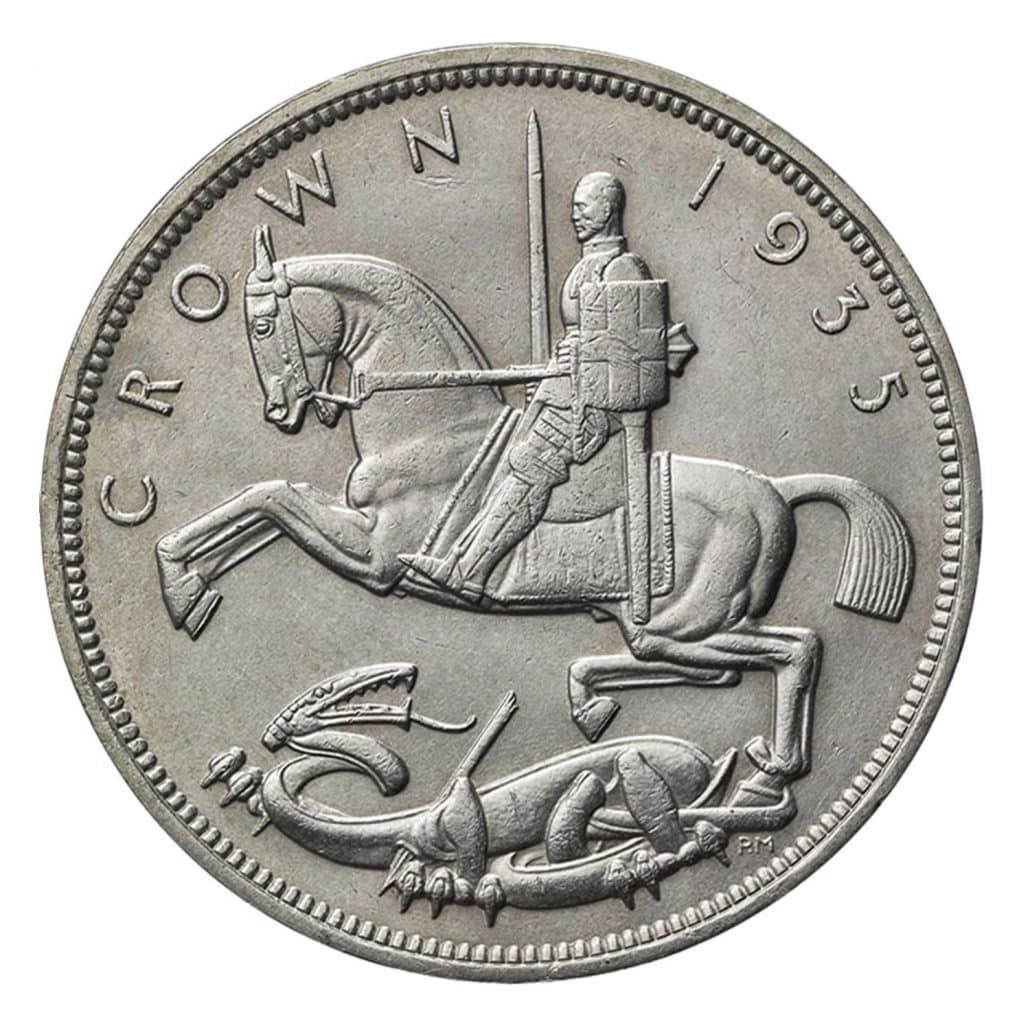
This coin, in its regular silver edition, sells for just under £20 on average with proof versions selling for much more. The gold version, for example, sells for upwards of £100,000, but we’ll get into that later in this article.
1951 Festival Of Britain Crown
Another intriguing crown coin is the 1951 Festival of Britain crown which was the second (and last) crown issued during the reign of King George Vi.
This crown isn’t as rare as the 1935 Jubilee crown, but still regularly sells for around £6 in standard finish. There are other versions that sell for thousands, however,
1953 Coronation Crown
When Queen Elizabeth II succeeded the throne in 1953 a crown coin was issued, and it is incredible to think that just this year the Platinum Jubilee was commemorated with another crown coin.
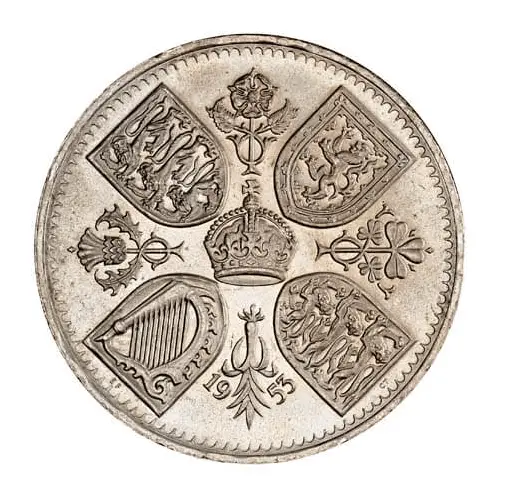
You can pick up a regular version of this coin for around £3.30, with proof versions being worth much more.
1980 Queen Mother Crown
A more recent crown from the 20th century is the 1980 Queen Mother crown, which was issued to honour the 80th Birthday of the Queen Mother.
This coin is not one of the rarest crown coins, but it still sells between £1 and £2 for the cupro-nickel version.
What Are The Rarest Crown Coins?
In terms of rare crown coins, there are a lot of examples, so we’ll take you through a few of them and how much they’re worth.
1935 Jubilee Crown – Raised Edge Proof Error/Gold Versions
The 1935 Jubilee crown was issued in a few varieties, the rarest of which is the gold-proof edition that was only available through a public ballot. It is thought that 25 were released to the public, with 28 being minted in total, and these sell for up to £100,000 at auction.
The raised edge proof version is no slouch either, and confirmed errors of this coin can sell for up to £10,000.
King George V Wreath Crowns
Aside from the gold 1935 Jubilee crown, there were also regular crowns issued during the reign of George V that all had very small mintage.
| George V | 1927 | 2,473 | ‘Wreath’ Crown | 0.500 silver |
| 1929 | 932 | ‘Wreath’ Crown | 0.500 silver | |
| 1930 | 7,132 | ‘Wreath’ Crown | 0.500 silver | |
| 1931 | 2,395 | ‘Wreath’ Crown | 0.500 silver | |
| 1932 | 4,056 | ‘Wreath’ Crown | 0.500 silver | |
| 1933 | 4,847 | ‘Wreath’ Crown | 0.500 silver | |
| 1934 | 4,994 | ‘Wreath’ Crown | 0.500 silver | |
| 1935 | 9,034 | ‘Wreath’ Crown | 0.500 silver | |
| 1936 | 15,030 (proof only) | ‘Wreath’ Crown | 0.500 silver |
The values of these crowns vary greatly, but you can expect examples to sell for hundreds of pounds (and potentially more) depending on grade.
1847 Gothic Queen Victoria Crown
The 1847 Gothic crown is definitely one of the most visually stunning coins ever issued, and they regularly sell for above £6,000 due to the limited mintage of just 8,000.
The Royal Mint stock this coin from time to time, and you can check for availability here.
Record Breaking Crown – 1663 Reddite Crown
A new world record price was achieved for a crown in 2014. This was for a milled silver crown that was issued in 1663 as a pattern by engraver Thomas Simon. It was called the “Reddite Crown.”
This coin was presented to Charles II as the new crown piece. However, it was rejected in the end, as a design from the Roettiers Brothers was chosen instead.
The coin was sold on the 27th of March 2014 by the famous auctioneer Spink & Son of London. How much was it sold for? A massive £396,000 with commission included!
The coin was the second part of the Glenister collection. It was the twin of The Petition Crown, which sold at Spink in 2007 for £207,000.
Final words
So there you have it: an insight into the crown and how much it is worth today. As a commemorative coin, crowns have a face value of £5. However, for coins that were minted in lower numbers, you may be able to fetch as much as £50 for your coin.
Nevertheless, for a lot of people having this coin in their collection is worth more to them than such a sum of money!
